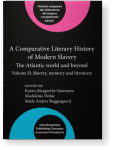Chapter 22
A people made of mud
An archaeological tale of enslavement at beef jerky plantations, Southern Brazil
Enslavement memories provide a fruitful field for transcending disciplinary boundaries. In Brazil,
colonial structures still permeate racial relationships; therefore, representations of the past can influence the
present. We incorporate an artistic/academic approach in order to both rethink enslavement experiences and explore
non-linear ways to narrate African diaspora history. This chapter is a literary tale created from our reading of
archaeological, historical, and ethnographic sources. The story presents a non-fiction scenario based on a beef jerky
plantation in Pelotas city, with imaginary elements portraying objects and people encounters. As footnotes, we add
comments on the evidence supporting some of the scenes. Through these writing possibilities (creative narrative and
scholarly text), we want to reflect on a past-present entanglement and on the role of imagination in understanding
fragmental realities.
Article outline
- Introduction
- A people made of mud
- Author queries
-
Notes
-
References
This content is being prepared for publication; it may be subject to changes.
